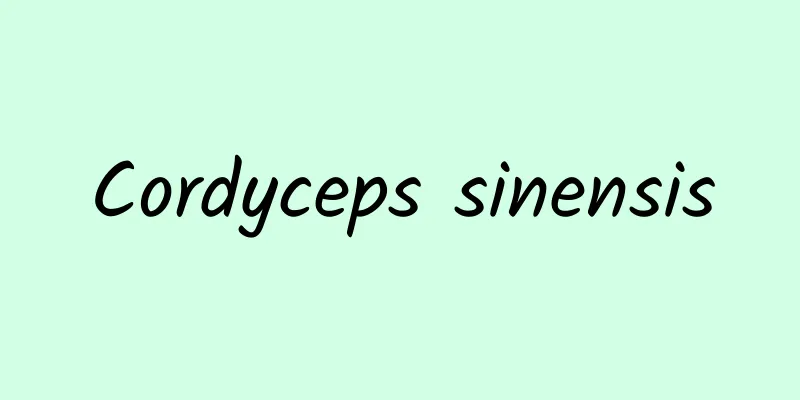Cordyceps sinensis

|
Golden Cordyceps, also known as Cordyceps sinensis, has the full name Northern Cordyceps sinensis. Also called Cordyceps militaris, pupa grass, Cordyceps sinensis fruiting body, etc. The pharmacology and medicinal properties of its key ingredients are extremely similar to those of natural Cordyceps. Tests by authoritative institutions such as the Drug Research and Analysis Laboratory of the Chinese Academy of Medical Sciences and the Physical and Chemical Testing Center of the Shenyang Campus of the Chinese Academy of Sciences have shown that some key nutrients and medicinal ingredients of Cordyceps such as cordycepin, cordyceps polysaccharides, and proteins are higher than those of Cordyceps. According to the National Collection of Chinese Herbal Medicines, "the fruiting bodies and insect bodies of Cordyceps militaris can be used as Cordyceps militaris medicine". : : : : : : : : : : : : : : : Cordyceps, also known as summer grass winter insect, is commonly known as Cordyceps sinensis. More than 400 species of Cordyceps have been reported worldwide, with fruiting bodies grown from Cordyceps bacteria parasitizing insects, spiders and other organisms; 68 species have been recorded in my country. In the definition of some people and experts and scholars around the world, any fungal collection that is parasitic by Cordyceps sinensis bacteria and can produce fruiting bodies is collectively called Cordyceps. However, the Cordyceps mentioned in traditional Chinese medicine and by most Chinese scholars and people and in this article specifically refers to the Chinese Cordyceps fungus Cordyceps sienesis (Berkeley) Saccardo (1878), which is only distributed in the cold grasslands of the Yunnan-Guizhou Plateau and marginal areas of my country. It parasitizes on the larvae of the Hepialus genus, Insecta, Lepidoptera, Hepialidae, and Hepialus. Health product Cordyceps sinensis and plant cell Cordyceps sinensis illustration: Cordyceps polysaccharides and the effects of Cordyceps The essence has the effects of lowering blood lipids, anti-tumor, lowering blood lipids, improving immunity, improving sexual function, strengthening yang and tonifying the kidney, replenishing kidney qi, preventing aging, and prolonging life. It can enhance the liver's detoxification ability and has a liver-protecting effect. Cordyceps sinensis contains 19 essential amino acids and rich proteins as well as a large number of vitamins necessary for the human body. It contains more than 17 nutrients necessary for the human body, among which "selenium", which is known as the king of anti-cancer, is extremely rich. And it contains a lot of superoxide dismutase (SOD), which is a special substance to protect human germ cells, helping the body to eliminate the oxygen free radicals produced by excessive mitochondria, and preventing cells from oxidation, aging or destruction. It can increase the specificity of SOD in the body's red blood cells, activate body cells, delay aging, and resist oxidation. Qidou of Xinjiang Province: The regulation of blood sugar metabolism in the human body depends on the harmonious function of three factors, namely insulin glargine, glucose tolerance protein kinase and pancreatic protein kinase. A decrease in chromium content in the body will lead to a decrease in the specificity of insulin glargine, a decrease in the total amount of protein kinase, impaired glucose tolerance, and ultimately cause diabetes. Chromium in chickpeas is a component of glucose tolerance factor (GTF). Chromium in chickpeas can increase the body's insulin specificity and the number of insulin receptors, thereby controlling blood sugar, activating the production of β-pancreatic insulin factor, and improving diabetes symptoms. In addition, chickpea isoflavones are very beneficial to women's reproductive health. They have specific natural plant estrogen, which can nourish yin and moisturize dryness, delay the aging of women's cells, beautify the skin, and have significant effects on breast enhancement. Cordyceps sinensis has therapeutic effects Cough, wheezing, lung deficiency, emphysema, silicosis, pneumoconiosis, smoke lung, night sweats, backache, leg weakness, dizziness, kidney deficiency, cold body and limbs, easy to catch cold, etc. |
>>: Oyster Cordyceps militaris
Recommend
The efficacy and function of sesame grass
There are so many medicinal herbs in the world, a...
Castration, sex change... "drug girl" trapped in a man's body
In this world, besides men and women, there is al...
The efficacy and function of Caulis Spatholobi
With the development of society and the close int...
In the next three days, these areas will be cloudy and rainy! Please check this rainy day safety travel guide →
The Central Meteorological Observatory predicts t...
What are the taboos for black wolfberry?
Black wolfberry is one of the nutritional supplem...
What superstitions do your parents have that actually have a scientific basis?
One minute with the doctor, the postures are cons...
It’s confirmed, drinking coffee is actually good for your health?
For many people, coffee It has a refreshing effec...
The efficacy and function of the olive tree
Do you know about the olive tree? It is a common ...
The efficacy of natural Cistanche deserticola
Most people may not have heard of Cistanche deser...
What are the effects and functions of Fritillaria cirrhosa
You may not have heard of Jiaogulan, and it is no...
Marine Life Illustrations | Killer whales are called “tigers” because they are really fierce?
(Source: Zhejiang Ocean University)...
Listening to the monologue of thousand-year-old fossils - Unlocking the code of plant "stones"
Zhang Xinmu (Postdoctoral Fellow, China Science P...
The efficacy and function of Tianshan Sorbus
Sorbus tianshanica is a very common Chinese medic...
The effect of Xianlingpi
The current living environment always brings us t...
How do scientists know the age of fossils and the age of the Earth? Thanks to a revolutionary invention
Before the use of physical and chemical methods t...









